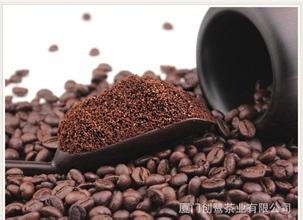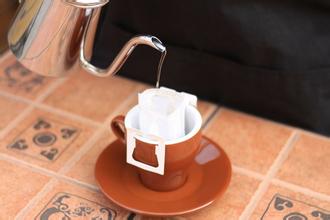Flavor description of coffee beans in Honduras introduction to the producing areas of fine coffee beans with grinding scale
Flavor description of coffee beans in Honduras introduction to the producing areas of fine coffee beans with grinding scale
Honduran coffee comes from El Salvador. At first coffee production was in a state of unavoidable heat until the frost in Brazil in 1975. At that time, Brazil was badly hit and coffee production plummeted, while Honduras took the opportunity to "take the top". Coffee production soared from 500000 bags to 1.8 million bags and was ransacked. It was only after that that coffee production in Honduras really developed. Honduras now ranks second in coffee exports in China and the United States (second only to Guatemala), and coffee is mainly exported to the United States and Germany.
What is there to miss about coffee in this turbulent country? Honduran coffee does not have very distinctive characteristics. Its biggest feature is that the overall taste is rich and well-balanced.
Medium or shallow acidity, giving the impression of obvious but not strong. Sometimes it has a beautiful floral or fruity aroma (generally speaking, beans produced in different regions and at different elevations have different performances). It is not at all associated with the unrest of the country. Bitterness and obvious sweetness. The overall taste of Honduran coffee is balanced, sour and bitter are not so strong, and there is a good balance between the two.
The 45 seconds after the explosion is the most critical moment in the life of coffee beans. During this period, a series of physical and chemical changes will occur in these beans. They continue to dehydrate and swell, and their sugars turn into caramel and carbon dioxide at high temperatures, and their grayish-green bodies turn yellowish brown, full and shiny; and their substances eventually turn into caramel, flavor oils, quinic acid and caffeine. The flavor oil is a "fragrant family" with more than 800 members.
The composition and content of these aromatics vary greatly according to different producing areas, picking methods, peeling and peeling methods, baking temperature and baking time of raw beans. So far, no one knows exactly what happened to these beans in such a short period of 45 seconds.
"Uncle Dou" opened the floodgates before the beans burst for the second time and went into deep baking. A burning smell sprang up instantly, and the coffee beans, like a flood discharge, poured into the large plate at the front of the stove and cooled quickly, driven by the spiral arm.
Making good coffee is only one step more than "instant"
In China, people's understanding of coffee either stays at the "instant" level, or knows the local coffee culture like the back of their hand, looking for expensive coffee beans, fancy and expensive utensils. 、

Important Notice :
前街咖啡 FrontStreet Coffee has moved to new addredd:
FrontStreet Coffee Address: 315,Donghua East Road,GuangZhou
Tel:020 38364473
- Prev

Flavor characteristics of Brazilian suntan yellow bourbon coffee introduction to Brazilian coe Champion Queen Manor Coffee
Brazil Yellow bourbon Coffee beans-the difference between tanning and washing Brazil is vividly likened to the giant and monarch of the coffee world. There are about 3.97 billion coffee trees there, and small farmers now grow 75% of Brazil's total coffee production. There are twice as many people engaged in coffee production in Brazil as in Colombia or even
- Next

Introduction of Katim Coffee Bean Flavor description Grinding scale Variety treatment method
Katim coffee bean flavor description grinding scale variety treatment method introduces that this variety is a variety with high and stable yield. The results of trial planting in different ecological types show that as long as it is planted according to the technical measures of high-yield cultivation, a higher yield will be obtained. the average yield per mu is more than 150 kg, and the small area can reach more than 400 kg. 1. The state-run Lujiang farm in Baoshan City planted 12.6 mu in March 1991.
Related
- Detailed explanation of Jadeite planting Land in Panamanian Jadeite Manor introduction to the grading system of Jadeite competitive bidding, Red bid, Green bid and Rose Summer
- Story of Coffee planting in Brenka region of Costa Rica Stonehenge Manor anaerobic heavy honey treatment of flavor mouth
- What's on the barrel of Blue Mountain Coffee beans?
- Can American coffee also pull flowers? How to use hot American style to pull out a good-looking pattern?
- Can you make a cold extract with coffee beans? What is the right proportion for cold-extracted coffee formula?
- Indonesian PWN Gold Mandrine Coffee Origin Features Flavor How to Chong? Mandolin coffee is American.
- A brief introduction to the flavor characteristics of Brazilian yellow bourbon coffee beans
- What is the effect of different water quality on the flavor of cold-extracted coffee? What kind of water is best for brewing coffee?
- Why do you think of Rose Summer whenever you mention Panamanian coffee?
- Introduction to the characteristics of authentic blue mountain coffee bean producing areas? What is the CIB Coffee Authority in Jamaica?

